“For a long time,” say Massimiliano Caretto and Francesco Occhinegro, “we wanted to stop and reflect on the content and expressive power that the Old Masters possess in a timeless way, in ways that elude chronological or art-historical categorizations.” This is how the two very young owners of the Caretto&Occhinegro gallery in Turin introduce the new chapter in their story, which now sees them join forces with star chef Antonello Colonna for the opening of a new exhibition space in theAntonello Colonna Resort & Spa in Labico, in the Roman hills: among the minimalist architecture designed by the Aniello/Tasca studio, furnished in an industrial style to welcome guests in a suave piece of Latium countryside, an unusual, unexpected and unconventional experience takes shape.
A new Caretto&Occhinegro headquarters three-quarters of an hour from Rome, one could sum it up in a dozen words, but one would be doing the project a disservice if one limited oneself to such a description: too reductive. In fact, the large salon that once a year will host a selection of Caretto&Occhinegro’s works (and which opened on Monday, December 13, in the presence of Culture Minister Dario Franceschini, with the first exhibition, Ápeiron, scheduled until January 8, 2022), goes beyond what the public traditionally expects. Not least because Caretto&Occhinegro have proven time and again that they want to go beyond any convention and any tradition: very young (both under 40) in an industry where establishing themselves at a young age is a feat bordering on the impossible, very passionate about their work, always looking for new ways to communicate what lies behind their work as antiquarians, they discovered the Antonello Colonna Resort during a vacation and immediately identified it as a suitable place to start a new and all-encompassing project. And their proposal was well received by Antonello Colonna, who did not hide his enthusiasm from us.
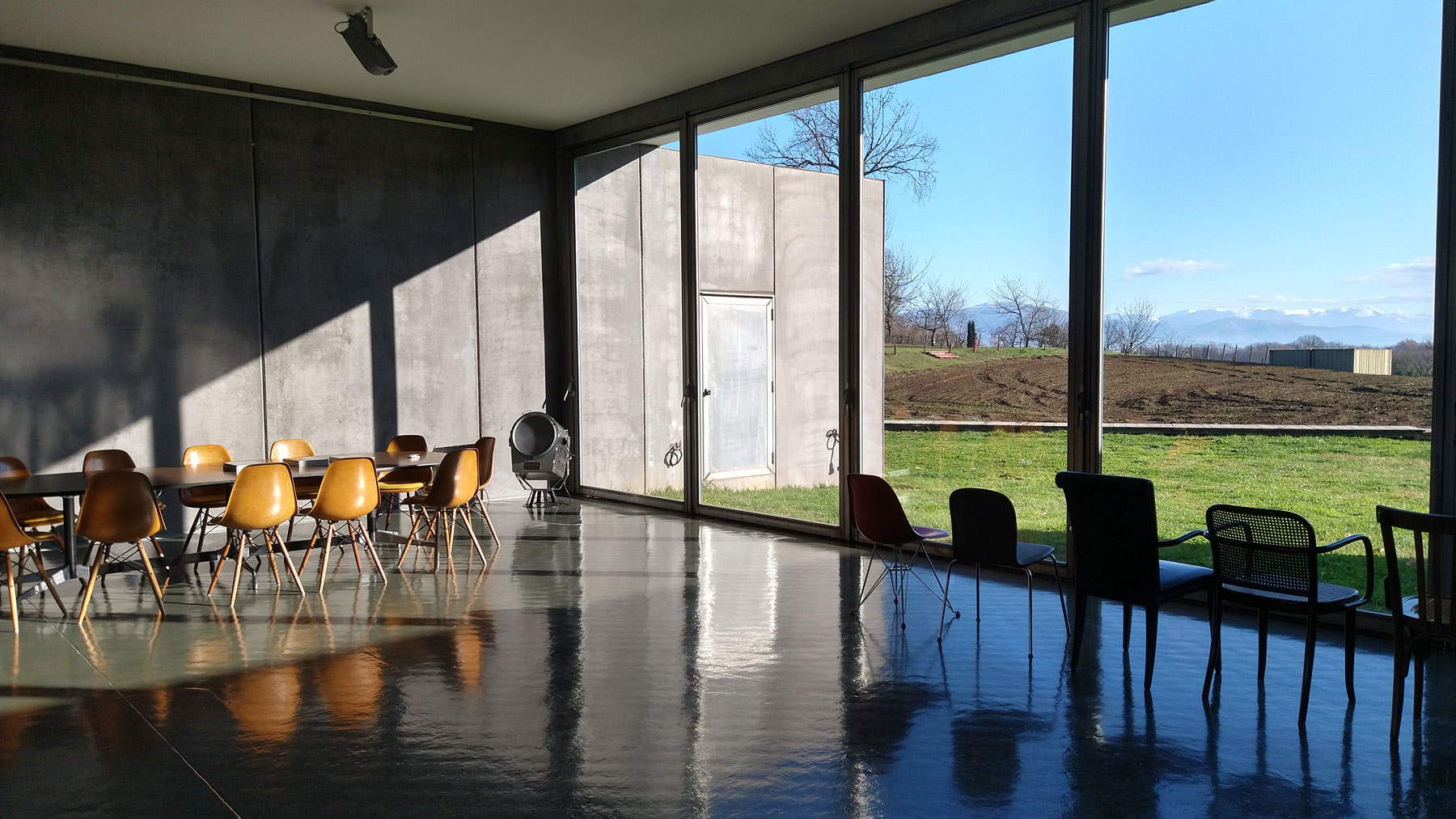
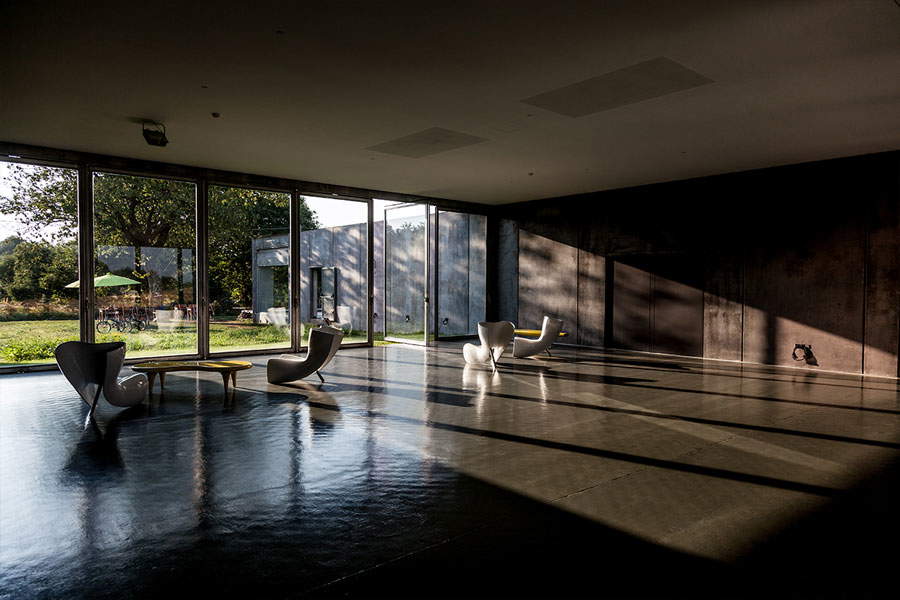
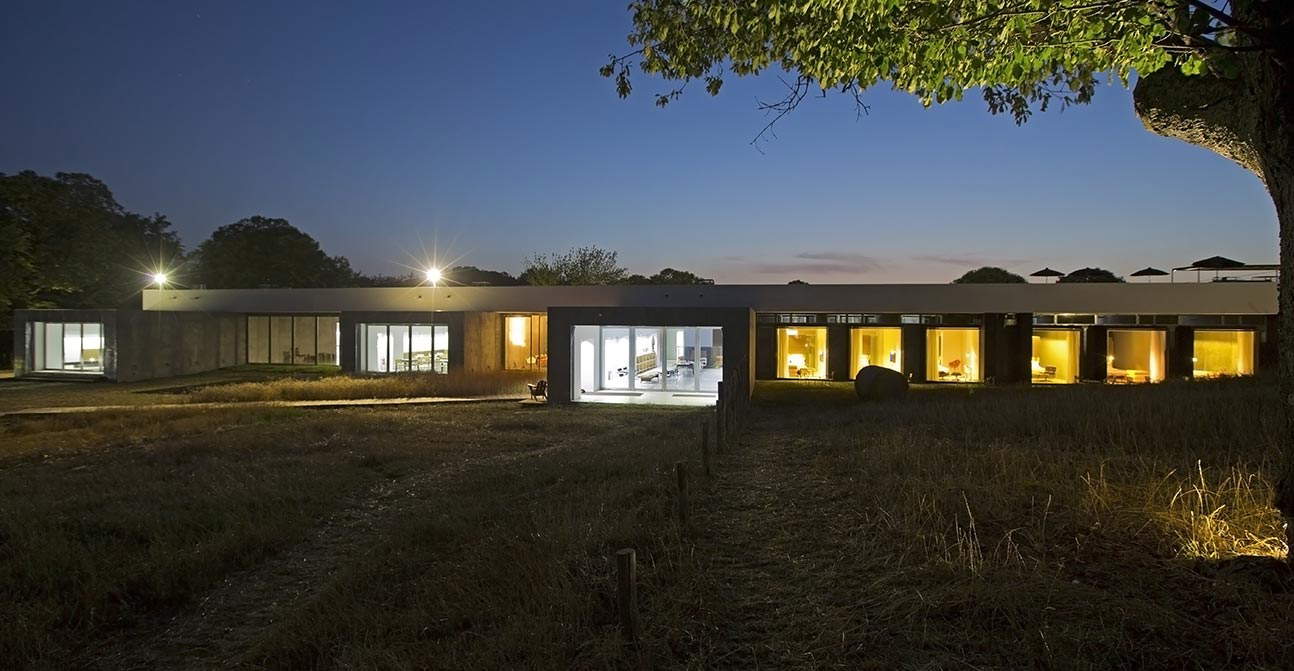
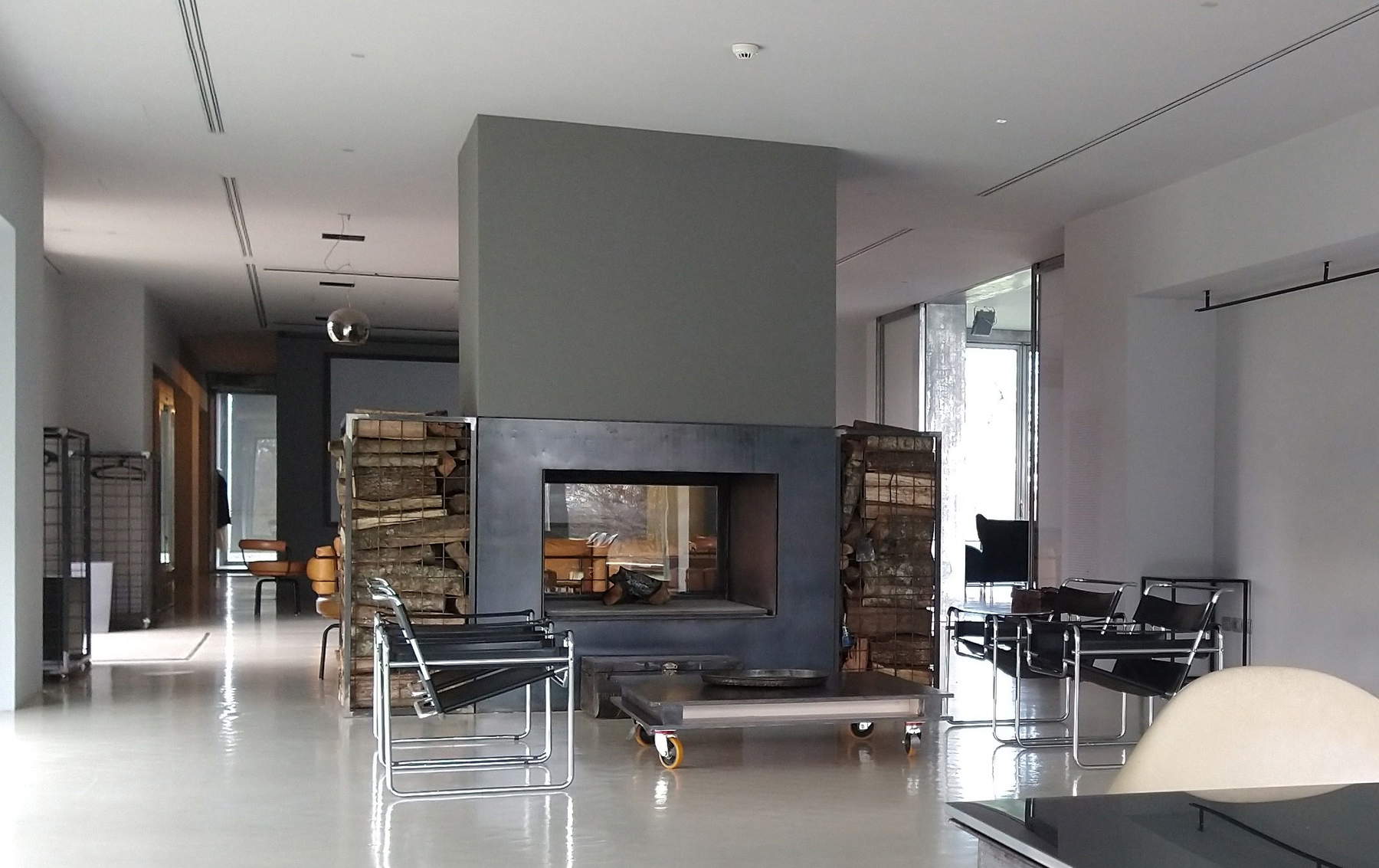
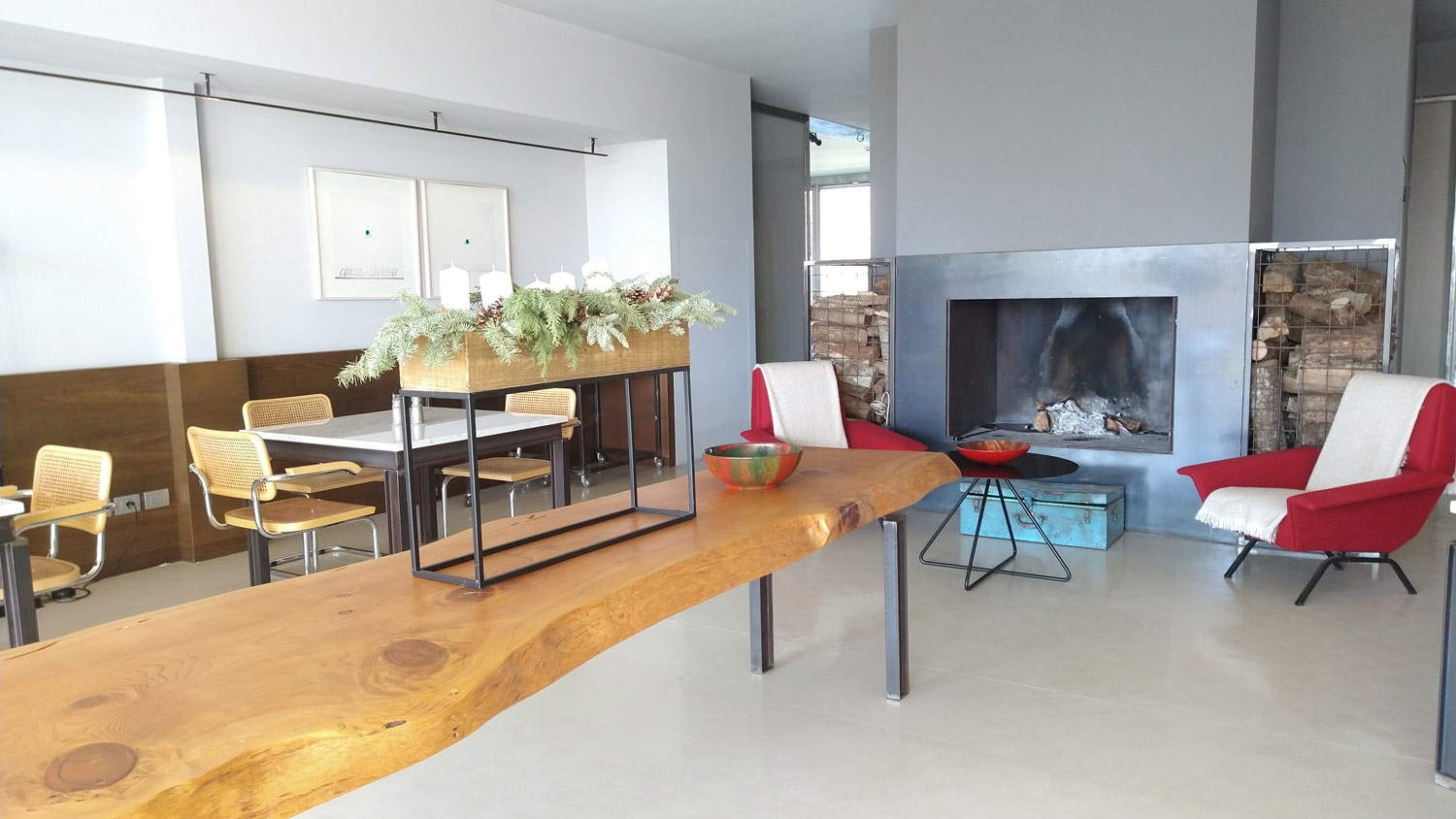
“We have never needed exhibition spaces understood in the traditional way, under the banner of the belief that space should be for you and we don’t need it,” Caretto and Occhinegro explain. “Well, now we can take this concept to a deeper level, suitable for those who, in some way, have chosen a meeting point with us, a common feeling, symbolized by the art we love and what it represents, now more than ever.” Thus, Massimiliano Caretto and Francesco Occhinegro, with the “patronage” (that’s the term they use) of Antonello Colonna, who since the opening in 2012 of his resort, as an art lover, has always welcomed exhibitions (mostly of photography, and in any case always on the contemporary: for ancient art it’s the first time), present the debut of what aims to be “a work of subtraction that will allow the paintings to speak freely, the environment to express its visual power, the protagonists to reason without filters.” The goal: “in the face of the epochal changes taking place, now no longer elusive, a path backwards is necessary to understand what is able to survive the tribunal of History even in contemporary culture, in the midst of the ’buzz of the world’ that today seems to have reached the point of no return.”
Many elements lead one to think that this is not simply the opening of an “other” venue. There is, in the first place, the location: shrouded in silence, far from the city (but not too far), completely detached from the frenzy that habitually moves the so-called “art world,” characterized by wide open spaces (also to be understood in the technical sense of open spaces that mark interiors), and strong in its ability to open smoothly to unusual contemplative dimensions. Large windows open onto the meadows and chestnut forest that lies immediately in front of the resort. Three little dogs to welcome guests lend the atmosphere a note of domestic familiarity. A section of the Via Labicana a hundred meters away: stones that have stood there for more than two thousand years. In the background, in the distance, the Renaissance architecture of Palestrina. “We felt we were inside our place of convergence,” Caretto and Occhinegro explain, “the destination of an escape from something that had reached us right there.”
There is the space: the project finds a home in a large hall with walls painted in shades close to slate, and gray, as is well known, is one of the most suitable colors for viewing works of art. Blades of light coming in through the stained glass windows during the day comfort the overall view and help perceive the exhibition as a large installation rather than a sequence of paintings. At night, the lighting system enhances the hues of the paintings and leads the audience to reason about the details, the meanings of the works, and the juxtapositions proposed by Massimiliano Caretto and Francesco Occhinegro, curators of the exhibition and the refined catalog that accompanies it, another unusual object, since it is a detailed account of personal choices and plots of meanings rather than a working tool such as a gallery exhibition catalog usually is. There is the very nature of the project, linked above all to the ideas and visions of the two gallerists (starting, as they would say in English, from the very beginning, since the intuition stems from a stay of pleasure), and therefore able to convey to those who visit the Antonello Colonna Resort & Spa something more than what an exhibition usually communicates: the choices, the tastes, the preferences that inform and animate not only the work but also the passion (a term, the latter, that is much abused, but which in this case is spent with good reason and well describes the origins of the project) of the two antiquarians. Starting point, three questions: what is a work of art? Who buys works of art? And who buys the artworks proposed by Caretto&Occhinegro? The answers that the two gallerists try to give are those that the visitor can find in the large Labico exhibition.
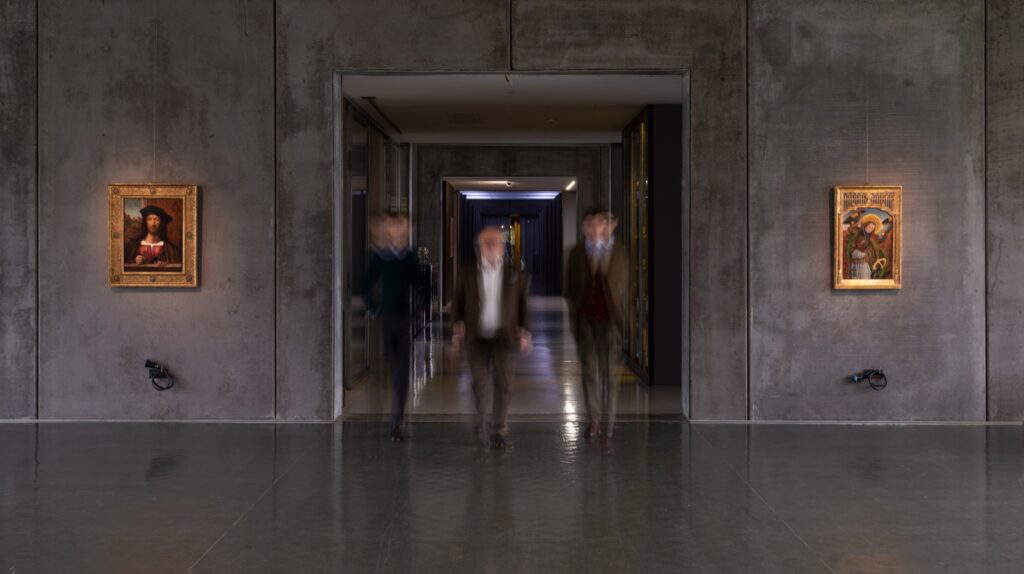
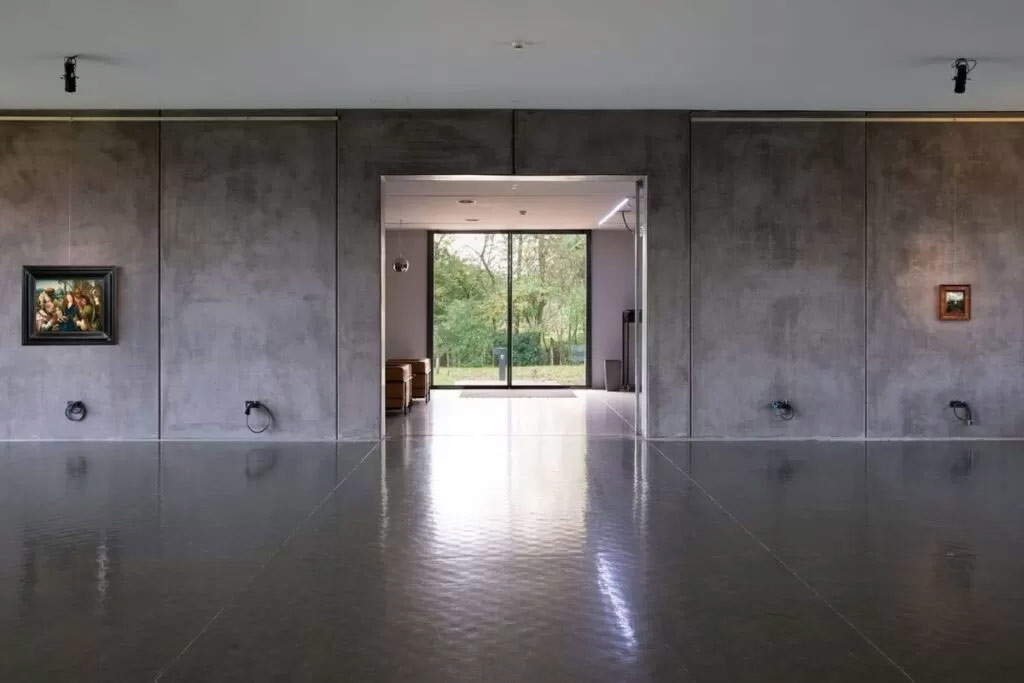
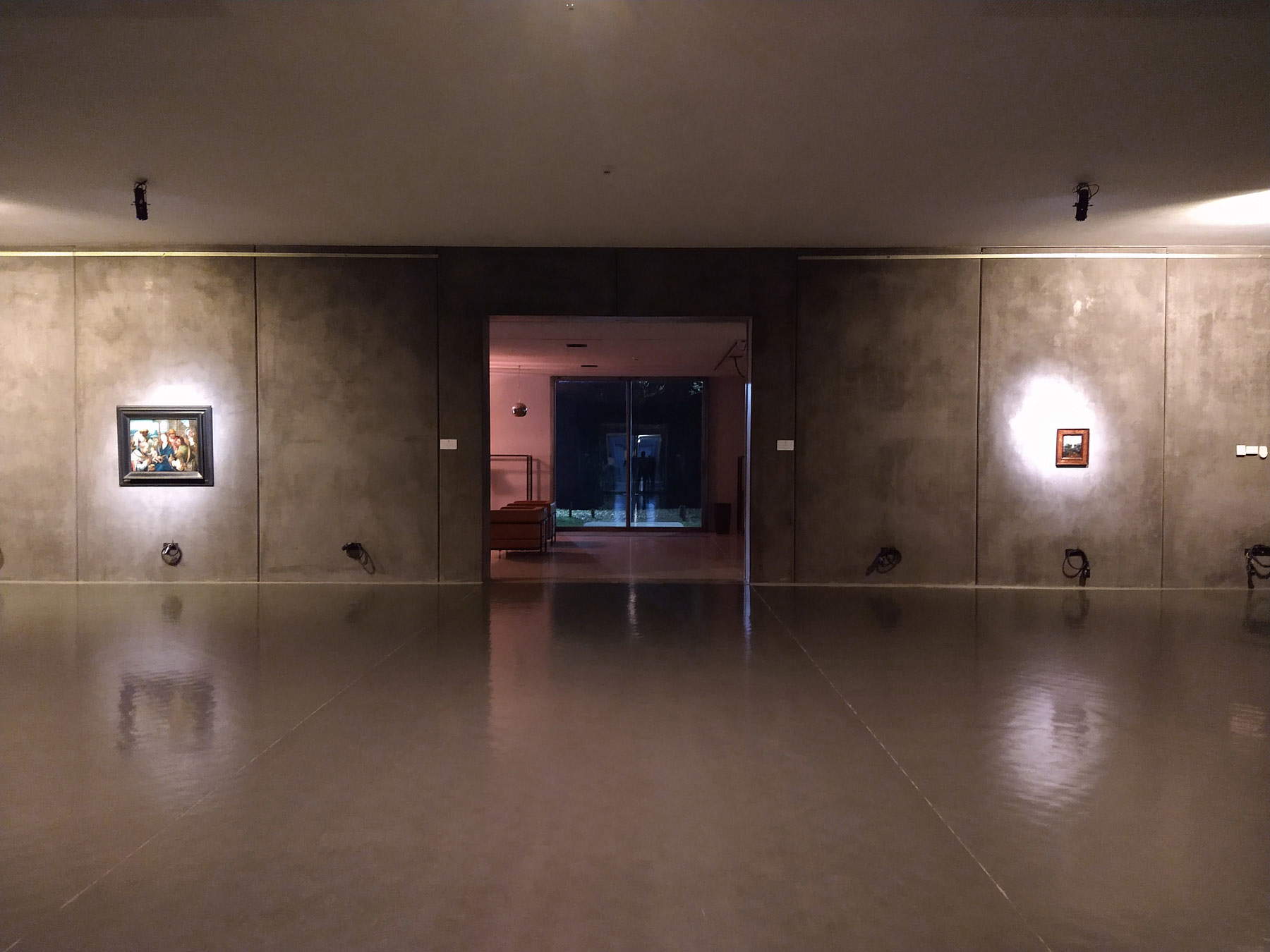
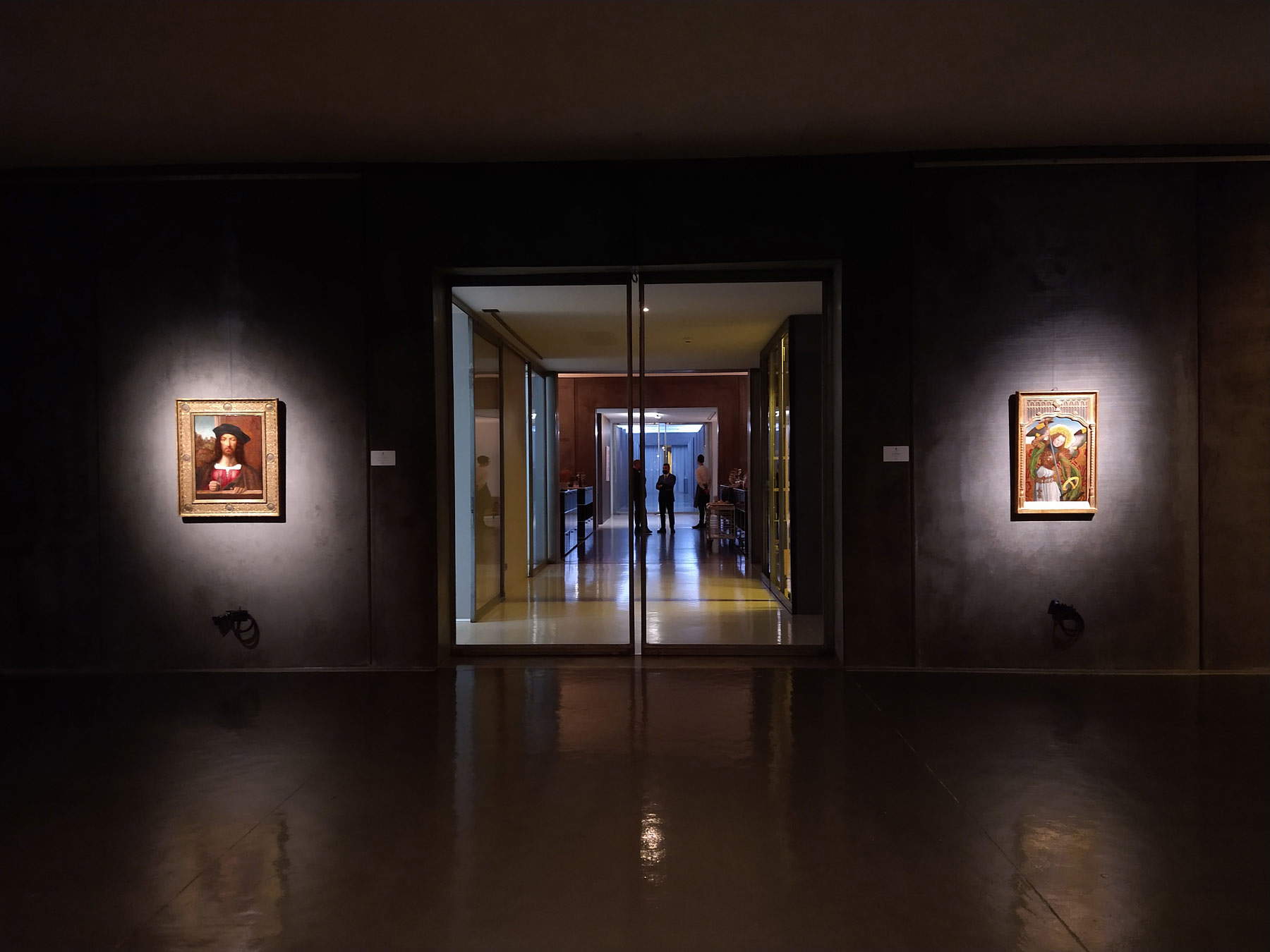
This, then, is the project, which will present a different selection each year. Ápeiron is the first one. The title is borrowed from Anaximander, the great pre-Socratic who formulated the concept: the “principle of beings,” according to the philosopher, “is the ápeiron, from where in fact beings have their origin, there they also have their destruction according to necessity, since they pay to each other the penalty and atonement of injustice according to the order of time.” Ápeiron, which can be translated as “infinite” (but is but one possible translation of the term), is the principle that governs the universe. Infinite, but also unlimited and indefinite. By elaborating the concept of Ápeiron, Anaximander intended to explain the origins of the universe. In the same way, Caretto and Occhinegro tried to go, meanwhile, to the origins of the love of art, which is also infinite, like certain works of art that support it. The four masterpieces chosen for the resort exhibition (a St. Michael by the Master of San Nicolás, an Adoration of the Magi by the Master from 1518, Herri met de Bles’s Earthly Paradise, and Jacopo de’ Barbari’s Portrait of an Architect, all of which have already been the subject of in-depth study) are works that overturn the famous adage that all art is contemporary art. A maxim that holds up from a biological point of view, so to speak (every work is contemporary with respect to the period in which it was born), but not from an ontological point of view, since only a few works are given to remain always contemporary. The first selection criterion was therefore this, it seems to be guessed by reading between the lines in the catalog: works that, although imagined to speak to human beings of the sixteenth century, are still able to speak to the women and men of the third millennium, regardless of the names of their authors (and this is demonstrated by the fact that two of the works exhibited are in fact anonymous). Here, then, is a first and necessarily partial answer that could be given to the questions at hand: a work of art, for a collector, is an object that touches him, perhaps unconsciously and unconsciously, but it is difficult to buy a work without it resonating something in the feeling of its buyer.
And then, of course, there is the narrative, a kind of history of humanity that is seen through the point of view of artists associated with late 15th-century northern Europe, as is only natural for a gallery that has always treated works by Flemish artists (although in fact only two artists in the exhibition are Flemish). The itinerary imagined by the two gallerist-curators invests a surprising multiplicity of themes, and opens with the struggle between good and evil that sees its highest standard bearer in the Saint Michael of the Master of San Nicolás. St. Michael, as is well known, is the commander of the heavenly armies that defeat the rebellious angels led by Lucifer and drive them into the darkness of the hellish chasm. The author, whose namepiece is the altarpiece with the Last Judgment preserved in the church of St. Nicholas in Burgos, is a Flemish-trained Spaniard working in the era of the final throes of the Reconquista, and at the time, Caretto and Occhinegro explain in the catalog, “marking the difference between good and evil is a religious and therefore also a political act, and more than giving space to the Fallen (or Falling) Angel, it is the divine transcendence, the inevitability of a higher power that one wants to emphasize.” Flanders and Spain found themselves closely linked, as the rich northern lands financially supported the Spain of the Catholic kings, with the consequence that cultural and artistic exchanges were also fruitful: the Master of San Nicolás is one of the most eloquent products of that season.
The second act, moving diagonally, is the Earthly Paradise by Herri met de Bles, a 16th-century artist who places his Adam and Eve in a lush forest filled with animals (one recognizes elephants, goats, birds of all species, even a unicorn) where, however, disturbing presences also stir, starting with the monstrous sharks that inhabit the waters on the left and the animals that fight each other. Scenes that, animated by a visionary flair similar to that of Jheronimus Bosch, which Herri met de Bles was well aware of, foreshadow the fall and the expulsion. It is not only the “chronological” continuation, so to speak, of the stories told in the sacred books of Christianity, but it is also another chapter in the struggle with which the exhibition opened, and here, the catalog further reads, “Nature plays a role that is anything but super partes and in which a scanty humanity remains crushed, scrambling helplessly and haphazardly in an insectoid microcosm of personal battles, unaware of the overall design, in any case hatched against Her, since the origin of time.”
The third act, that of redemption, is grafted in here: theAdoration of the Magi by the Master of 1518, an artist whom part of the critics, with consensus but not unanimity, have proposed identifying as Jan van Dornicke, a painter originally from Tournai and active in early 16th-century Flanders. The story, however, can take another channel, it can deviate from religious history and enter the history of human beings: the legend tells of three sovereigns who had the premonitory signs of the birth of the King of the Jews and therefore went on a journey with the retinue of their colorful courts to revere him as befits a monarch born under the auspices of the stars. Great would have been their surprise to see that this king was the son of two poor parents, born in a hut warmed by an ox and a donkey. “The story,” we read further in the catalog, “had an impact hardly equaled in the imagination of Western civilization, which at the end of the Roman Empire went from being made up of soldiers, politicians and philosophers, to vassals, priests, travelers, dreamers of all kinds. Through a single episode, it was thus possible to have as many forms as the human mind is capable of conceiving.” Finally, we move on to the opposite wall where we admire The Architect by Jacopo de’ Barbari, the most Nordic of the Venetians of the 15th century since he was long active in Germany (where he was known as “Jacob Walch”), who with his portrait, whose subject has recently been identified as Hans Behaim the Elder, the architect who changed the face of 15th-century Nuremberg, introduces the final act, that of the story of the human being who became demiurge and faber suae fortunae.
However, this is not the only possible path through the works. Entering the salon, one can also turn in the opposite direction and read, for example, two parallel stories: that of the redemption of humanity after the fall, represented by the Jacopo de’ Barbari-Herri met de Bles axis, facing each other on the two opposite walls, and that of Christ’s sacrifice that made it possible and of the saint who had announced it to Constantine (this role of St. Michael would be, within a few years, further emphasized in the Tridentine era). But the first two works also stand in relation to each other because of their strong anticlassicism: formal that of Herri met de Bles, who, as mentioned, refers openly to Bosch; conceptual that of Jacopo de’ Barbari, who addresses the few initiates into alchemical Hermeticism with certain symbols (such as the colors of Hans Behaim’s clothing, the brown of the cloak the white of the shirt and the red of the robe, i.e., the colors of the alchemical stages according to the initiatory texts, alluding respectively to the destruction of matter, the conception of the rebirth of disintegrated matter through the creative act, and the concrete act itself: all underscored by the magnificent shirt strings, black and white to signify the opposite poles of existence). And, to continue to stay out of the terrain of religious readings, with the other two one can instead linger, for example, on the expectations of patrons in Renaissance Flanders: profusion of golds, of fine pigments, unique and precious decorations that in the painting of the Master of 1518 and that of the Master of San Nicolás touch unusual heights. But one could also take the discussion to the historical level and talk about the tensions of Europe before the Reformation. The possibilities are many. As any antiquarian knows, the choices that lead us to appreciate (and buy) a work of art are entirely personal. So, too, the itinerary is not meant to be obligatory: there are hints that suggest keys to interpretation, but each visitor will be able to form his or her own itinerary, according to his or her own sensibility and experiences, according to the views that are most congenial to him or her.
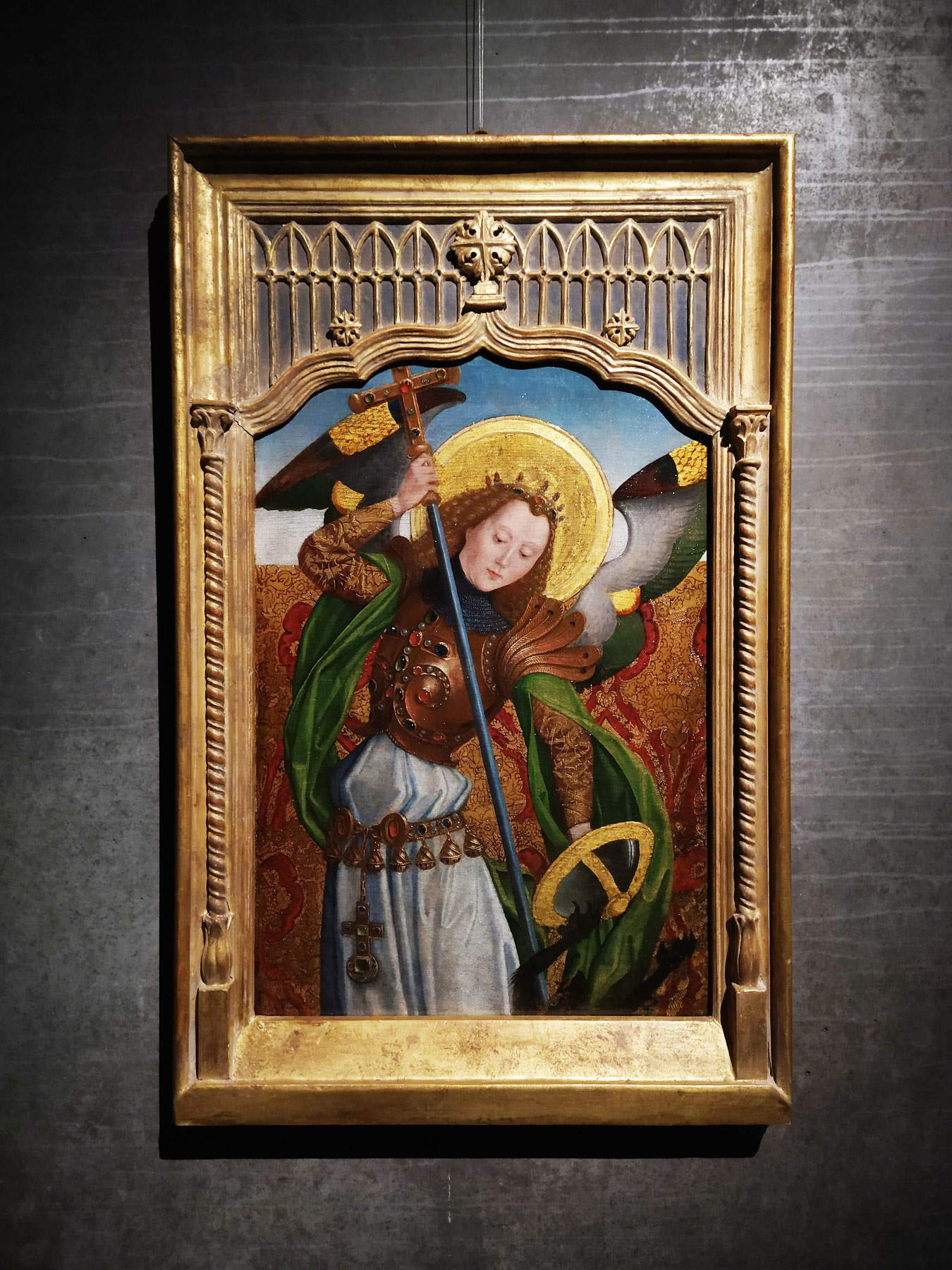
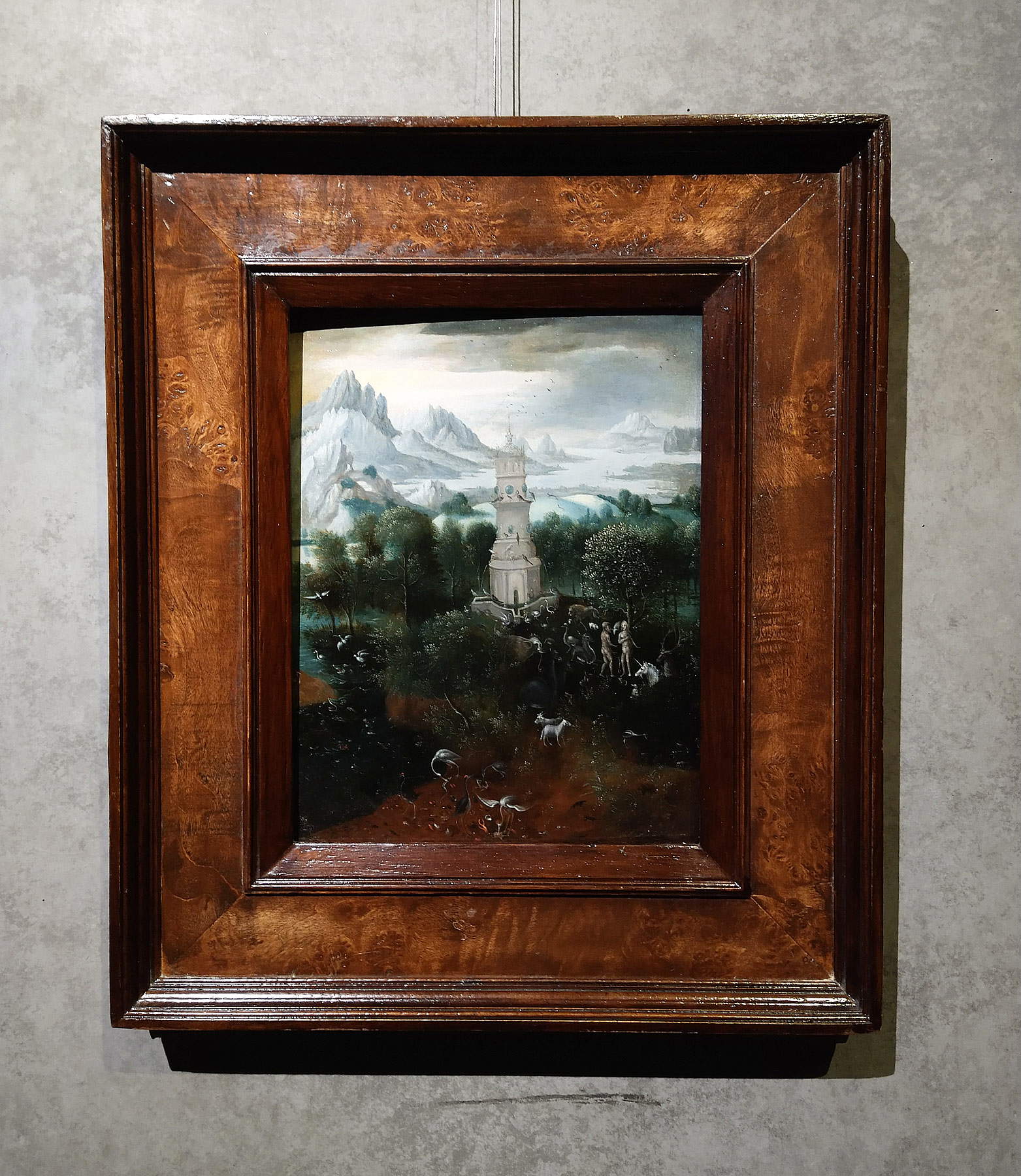
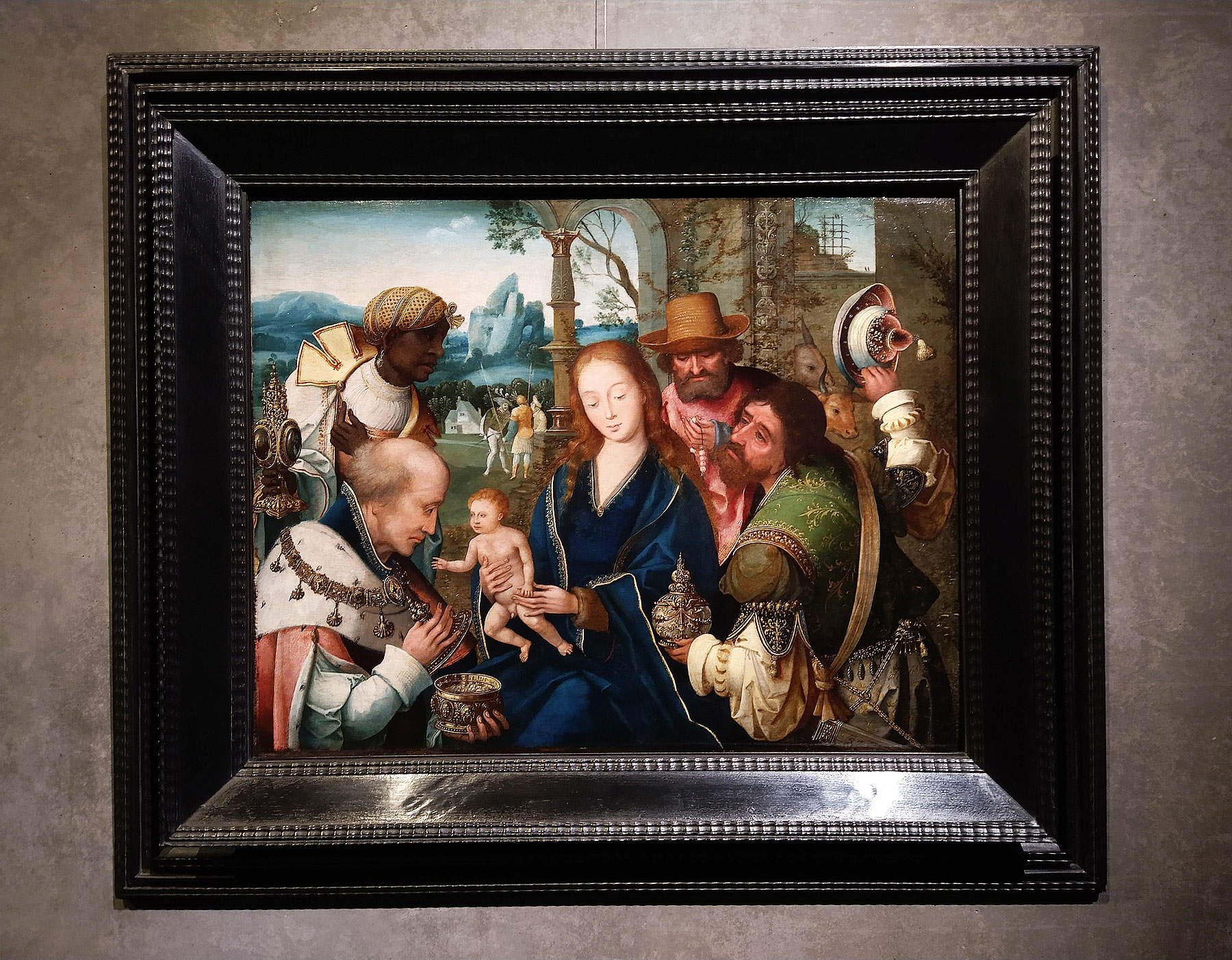
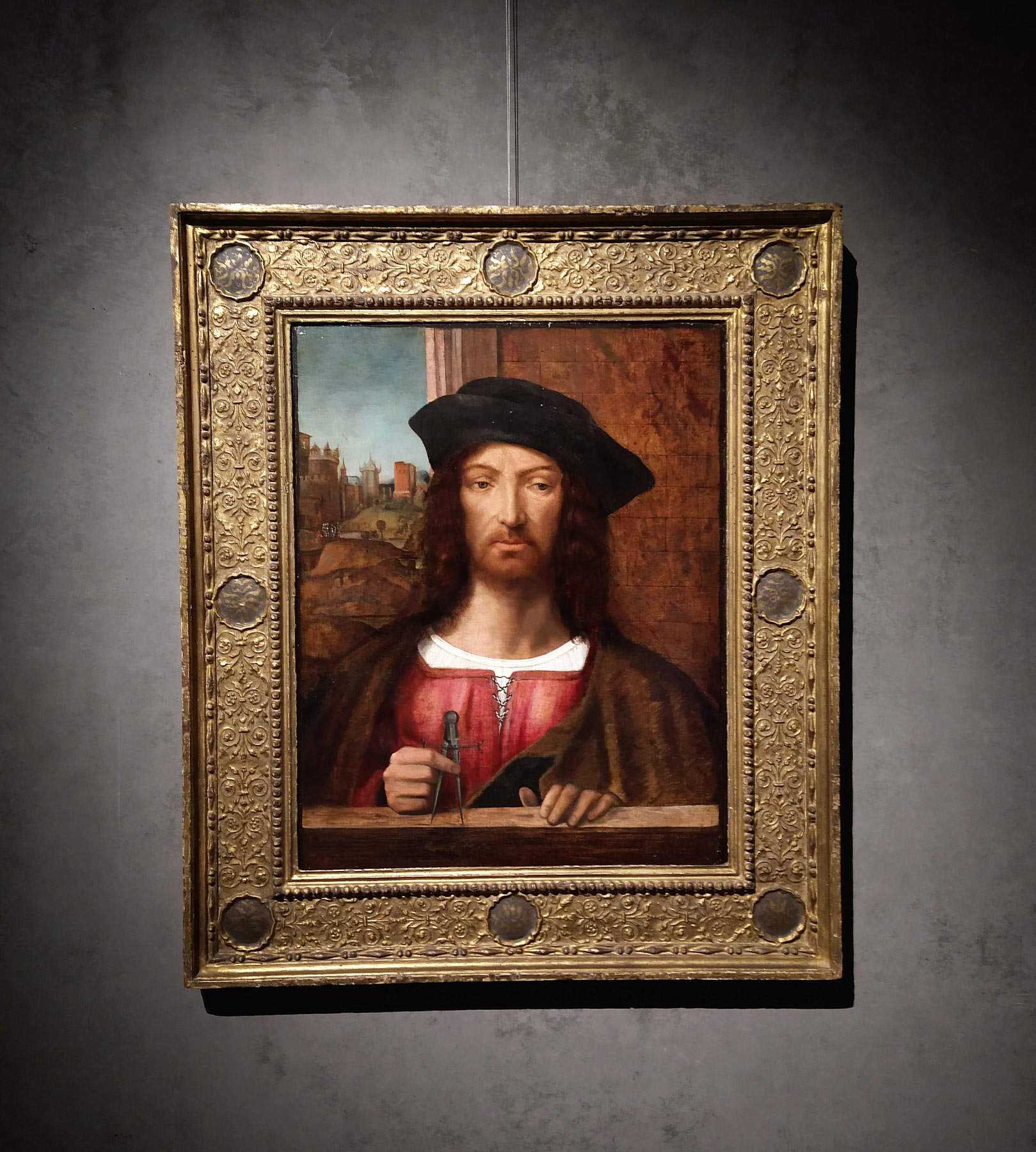
The project, Massimiliano Caretto and Francesco Occhinegro conclude, “is the first in a series that will constitute our fixed presence, every season,” at the Antonello Colonna Resort & Spa. At the moment, it is not known what the next works will be that will find a temporary home in what has already become a de facto second home of the Turin gallery. What is known, and what can be said, is that the gallery and the resort will continue to work on the basis of one of Caretto&Occhinegro’s cardinal principles: discover in order to enhance (a commitment the two antiquarians have never shirked: those who attend art fairs know this well, since their selections are always among the most admired and among those of the highest quality), keeping in mind that the center of any action of this kind is the clients, the collectors, the public.
Novelties, unprecedented perspectives, roads and unions that have never been attempted. Massimiliano Caretto and Francesco Occhinegro deserve the credit for having elaborated the proposal, Antonello Colonna for having sensed its potential and for continuing to work to invest in art and to support it, welcoming it in a space where barriers fall, boundaries become blurred, and where one has the feeling that the continuity between art and what is outside flows unforced, in a completely spontaneous way. Just one week after the opening, it is still too early to say where the road traced by Caretto, Occhinegro and Colonna will lead (because that is how it is: every new experience is like the opening of a new path), and whether there will be others who will follow suit, but it can already be said, with certainty, that this is an operation that brings ancient art into a new and different dimension. To be followed.
Warning: the translation into English of the original Italian article was created using automatic tools. We undertake to review all articles, but we do not guarantee the total absence of inaccuracies in the translation due to the program. You can find the original by clicking on the ITA button. If you find any mistake,please contact us.